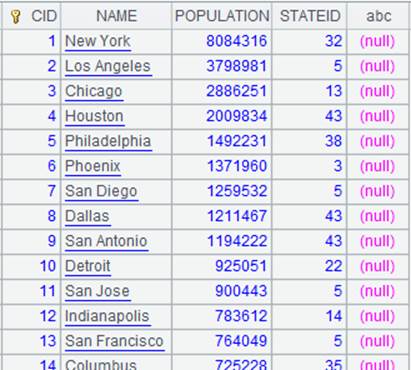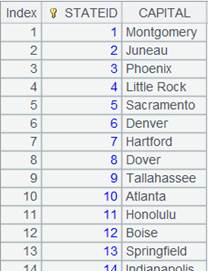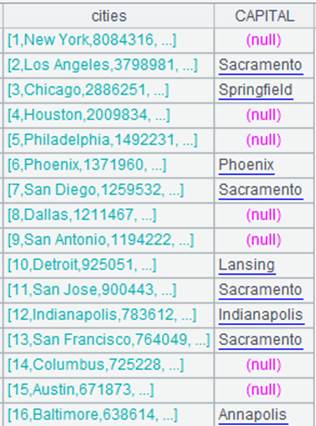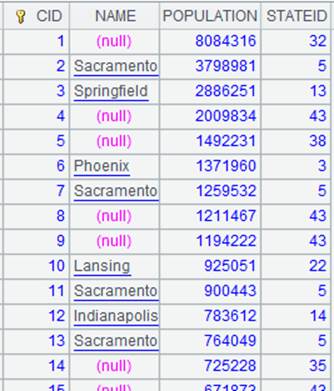mcumsum()
Description:
Perform cumulative sum on a matrix or a multidimensional matrix.
Syntax:
mcumsum(A, n)
Note:
In the external library function (See External Library Guide), parameter n is the sequence number of dimension level where summarization is performed. If n is absent, the desired dimension is the first one whose size is not 1 in matrix A.
Parameter:
|
A |
A matrix or a multidimensional matrix. |
|
n |
A positive integer. |
Option:
|
@z |
Perform inverse cumulative sum. |
Return value:
Sequence
Example:
|
|
A |
|
|
1 |
[[11,12,13],[21,22,23],[31,32,33]] |
|
|
2 |
=mcumsum(A1,1) |
Perform cumulative sum on the first level of A1’s matrix – that is, sum members of each column. |
|
3 |
=mcumsum(A1, 2) |
Perform cumulative sum on the second level of A1’s matrix – that is, sum members of each row. |
|
4 |
=mcumsum(A1) |
Perform cumulative sum on the first level as parameter n is absent. |
|
5 |
=mcumsum@z(A1) |
Perform inverse cumulative sum. |
|
6 |
[[[111,112,113],[121,122,123],[131,132,133]], [[211,212,213],[221,222,223],[231,232,233]]] |
Define a three-dimension matrix whose two members are 3*3 matrices. Define a three-dimension matrix whose two members are 3*3 matrices. |
|
7 |
=mcumsum(A6, 1) |
Calculate cumulative sum on matrix A6’s first level, that is, perform the calculation on both of its two member matrices in alignment. |
|
8 |
=mcumsum(A6, 2) |
Calculate cumulative sum on matrix A6’s second level, that is, perform the calculation on each column of each member matrix.
|







